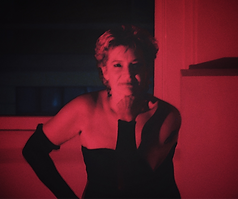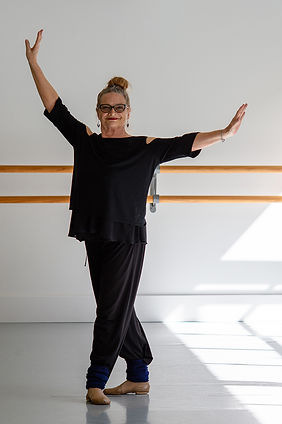
About
Mary-Jane the oldest of four siblings grew up in a happy generous spirited post WW2 household in Eastbourne New Zealand steeped in the conviviality and exuberance of musicals, classical ballet and dance. The joy and craft of which has deeply influenced and informed her work and approach to work throughout her creative career. That performance is by its very nature is a genuine, spontaneous connection with the audience both intellectually and emotionally.
She trained in ballet, then jazz dance and later studied Cunningham technique in San Francisco in 1976. These experiences gave her a broad technical base to draw from as she began choreographing in 1977.
Throughout the 1980s and 1990s, MJ was in demand as a choreographer, though her primary drive became creating her own work—especially after the birth of her daughter, Morgana, in 1985. With a desire to stay close to home during Morgana’s early childhood, she limited international travel, accepting only one major overseas engagement with the Lisbon Dance Company in 1987 after their director saw her work Saga performed in New York in 1981 (see review from New York Times).
Being based in New Zealand allowed MJ to work within a stylistically open, creatively borderless environment. Her work has ranged from contemporary dance and ballet to the provocations and sexual energy of cabaret burlesque, often crafting a unique movement vocabulary for each piece. She has choreographed for both trained and untrained performers, from ballerinas, bodybuilders to marching girls and everything in between.
Music has always been a central inspiration to her work. In the early years, she embraced contemporary jazz artists such as Kenny Burrell, Chick Corea, Herbie Mann, and Keith Jarrett. Her musical palette later expanded to include Talking Heads, Split Enz, the Topp Twins, and Miles Davis. She has also commissioned works by New Zealand composers Don McGlashan, Wayne Laird, Jan Preston and Neil Hannan, Jack Body, Ivan Zagni, and Jonathan Besser.
More recently, her musical selections have ranged from the classical—like Giselle Act II by Adolphe Adam in Ballet Noir (2021 and 2023)—to the eclectic cabaret/burlesque soundscape of In Flagrante (2011), featuring music by Klaus Waldeck, Laurie Anderson, Andrew Keoghan, Nick Cave and David Lynch. In Flagrante toured internationally (Edinburgh Fringe, the Seychelles, Melbourne) and across New Zealand, with a sell-out season in 2022 at the Auckland Live Cabaret Festival.
MJ has also had a significant impact as a teacher. In the early years, she taught Cunningham Technique to the Limbs dancers and collaborated with Mark Baldwin MBE (former director of Rambert Dance Company, UK) on her early works. She gave Douglas Wright his first professional job with Limbs in 1980 and has mentored numerous New Zealand dance artists, including Kilda Northcott, Debra McCulloch, and Taiaroa Royal. Today, she continues to teach a Ballet Basics class and an advanced level contemporary ballet class, sharing her deep technical knowledge and finely honed sense of musicality and performance.
Storytelling and her pop art sensibility is a cornerstone of MJ’s choreographic voice and in this has worked extensively with her husband and creative partner Phil O’Reilly in the development and realisation. Her works often carry strong narratives, contributing to the wide audience that Limbs Dance Company drew in. Introducing to many, for the first time, the experience of dance in the social mainstream while maintaining her avant-garde credentials. This narrative focus continued with works such as Games, Saga, the 1990 Commonwealth Games Opening Ceremony, Jean Batten – the Ballet, A4/Adam and Eve Revisited, Ballet Noir, and In Flagrante.
Power is another recurring theme in her work. Pieces like Games, Pyramid, Saga, A4, and Ballet Noir explore power structures. A passionate believer in that women can be what they want to be and don’t need to ask permission, MJ continues to advocate for strong, unapologetically bold women—especially in In Flagrante, which celebrates powerful, confident femininity and sexuality.
As a performer, MJ gravitates toward harmonious yet complex, ambiguous work. Her solos —such as Chimera (1988), Witch Bitch (2009), and Spinning Winter (2011)—are noted for their technical mastery, humour, irony and edgy satire.
View acknowledgements and a full list of works


Mary-Jane in rehearsal for Ballet Noir

MJ at Brown Street Studios, 1984
MJ as Fairy Godmother in Cinderella, a Hutt City Ballet production 1966

Mary-Jane in Camouflage, 1987
